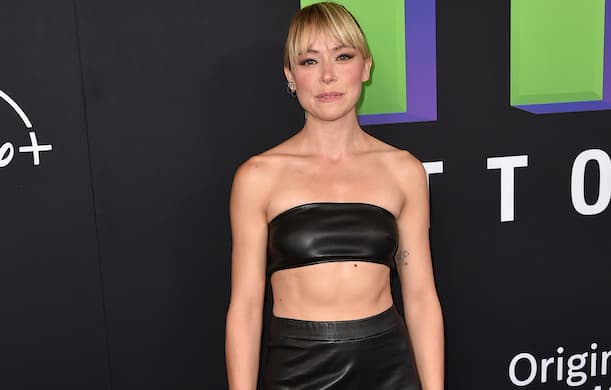The Delicate Balance of the She-Hulk
During the course of 40 years, the overall success of the character is not due to the notion that she is a female version of the Incredible Hulk, but rather because she is precisely the opposite.

Anyone who has been paying attention to the Marvel Cinematic Universe knows the She-Hulk is Jennifer Walters, cousin of Bruce Banner, the original Hulk, and she is the titular character of the new Marvel-Disney “She-Hulk: Attorney at Law.” In the comic, Ms. Walters gained Hulk-powers as the result of a blood transfusion from her cousin; in the TV series, it happened because the two are in a car crash together and somehow Bruce’s blood got into Jennifer’s veins. (It’s too much to expect actual logic or genuine science in a comic-book story.)
During the course of 40 years, the overall success of the She-Hulk is not due to the notion that she is a female version of the Incredible Hulk, but rather because she is precisely the opposite. The original Hulk was the most profoundly sad of all the great so-called superheroes, a superpowered being whose powers were absolutely no use to him. He could destroy a city essentially just by breathing hard, but had the relative intelligence and bad attitude of an angry 4-year old. Where Superman was loved and admired, the Hulk was hunted and shunned, perhaps the comics’ greatest antihero, a super-pariah.
Yet where the saga of Bruce Banner was perhaps the most tragically poignant in the Marvel universe, Jennifer Walters’s story was upbeat and comic. The character’s first, 25-issue run, “The Savage She-Hulk,” between 1980 and 1982, is not considered a success — essentially because it took itself too seriously. Jennifer Walters hit the jackpot with her second series, “The Sensational She-Hulk” (60 issues, 1989-94), in which writer/artist John Byrne made her a superpowered equivalent of both Daffy Duck in Chuck Jones’s “Duck Amuck” and Tevya in the Sholem Aleichem stories, in that she is engaged in a constant conversation with her creator.
She-Hulk, now sensational and no longer savage, was a true heiress to “Howard the Duck,” which, as masterminded by writer Steve Gerber and artist Mike Ploog in the 1970s, was the bizarrest and funniest comic book series yet released by one of the major mainstream publishers.
In direct contrast to her tormented, angst-ridden cousin, Jennifer Walters acted like an ordinary woman who positively relished being transformed into a 7-foot-tall, green-skinned supermodel. She never missed an opportunity to slip into something skimpy and pose for the readers even while always having some kind of barbed comment directed at Mr. Byrne — which served to let the series have it both ways.
Marvel’s teenage male audience drooled over her, but the series had plenty of female followers as well. The most celebrated issue (#40) had “Shulkie” skipping rope — allegedly completely naked — on the cover and for the first seven pages, until a point where the series editor, Renee Witterstaetter, makes an appearance and impels her to stop and get on with the story. Four issues later, She-Hulk is depicted on the cover wearing a heavy overcoat and a muffler across her face in the middle of summer and telling readers, “Sorry guys, the powers that be say I’ve been pushing it on my past few covers, so this is all you get this month.”
In 2004, Marvel launched another excellent She-Hulk run, in which writer Dan Slott utilized many of the best aspects of the Byrne series, including the general idea that She-Hulk and cast know that they’re in a comic book. Mr. Slott developed the idea of Jennifer Walters practicing for the firm Goodman, Lieber, Kurtzberg & Holliway, specializing in “superhero law,” and makes frequent use of vintage comic books to serve as legally admissible evidence, one of the many admirable notions to make its way into the TV series.
In the second episode, Tatiana Maslany, the Saskatchewan-born actress who plays Jennifer Walters, broods about becoming a jolly green giantess. Her father (Mark Linn Baker, my favorite actor in my favorite movie, “My Favorite Year”) bucks her up by saying, “It’s gonna be okay: This isn’t even the first time we’ve had to deal with a hulk in the family — and you didn’t destroy a city.” He says it with a straight face that defines the tone of the show. It’s just funny enough and just serious enough — to quote Edward Albee, it’s “a delicate balance” — to make this show that rare contemporary TV venture where I really look forward to each new episode.
The strength of the show, as adapted for the medium by Jessica Gao, like the best of the MCU in general, is that it takes advantage of 40 years’ worth of good ideas. As in the John Byrne issues, Ms. Maslany frequently goes totally Tevya and comments to the audience. Now, I only wonder if she knows how to skip rope.
Rudyard Kipling famously insisted that “the female of the species” was “more deadly than the male,” but he never met our Shulkie.

